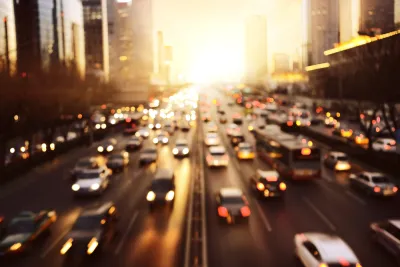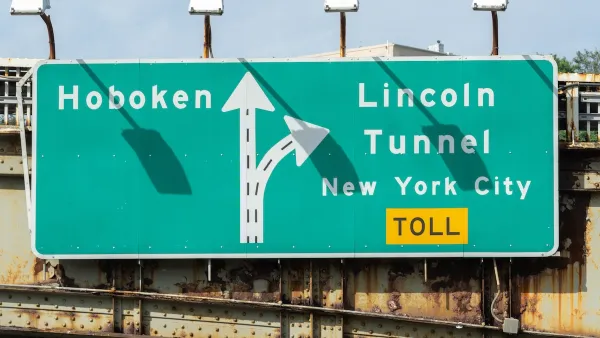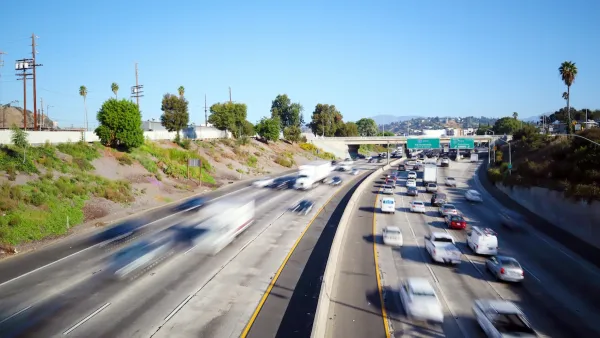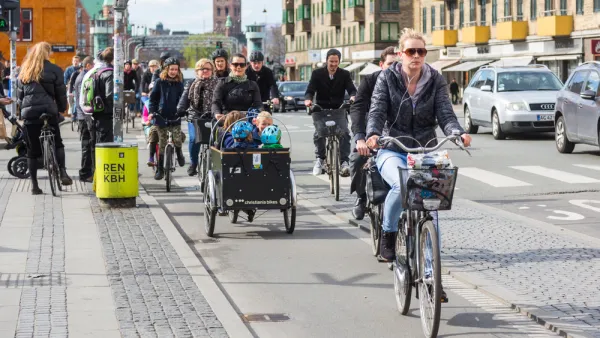Local leaders must invest in public transit and other incentives to reduce the number of private vehicles and congestion in cities.

"Understanding how cars affect cities and commute times is of vital importance, both for the sake of the climate—transportation is the biggest share of U.S. emissions and a growing chunk globally—and quality of life," writes Dharna Noor. A new study "modeled the time car trips take, factoring in the baseline length of the trip on empty streets, the time added by other drivers who create traffic, and the time added by the designation of some street lanes for exclusive use by pedestrians, buses, and bikes" to conclude that "we have to start getting cars off the road—and fast—if we want to avoid cities being overrun by gridlock."
The choice between driving and using other modes of transit, Noor writes, "creates an inherent paradox. If more people decide that driving is quicker, there will be more traffic, clogging streets and making trips longer. The longest trips across town, the authors found, were the ones taken when every single resident tries to reduce their commute times by driving, thus creating the most traffic."
"The authors also discuss some ways to reduce the time it takes to get across a city and lower carbon pollution, including investing in more reliable and quick public transit, building more bike lanes and walking paths, and not separating residential areas from commerce. They also suggest reducing the number of traffic lanes in cities and building less parking to discourage people from driving or even owning a car in the first place, making city travel faster for everyone."
Despite some limitations in the analysis, "the model is instructive, showing the logical fallacy of attempting to reduce drive times by increasing the use of cars."
FULL STORY: Why Cities Should Ban Cars, According to Science

National Parks Layoffs Will Cause Communities to Lose Billions
Thousands of essential park workers were laid off this week, just before the busy spring break season.

Retro-silient?: America’s First “Eco-burb,” The Woodlands Turns 50
A master-planned community north of Houston offers lessons on green infrastructure and resilient design, but falls short of its founder’s lofty affordability and walkability goals.

Delivering for America Plan Will Downgrade Mail Service in at Least 49.5 Percent of Zip Codes
Republican and Democrat lawmakers criticize the plan for its disproportionate negative impact on rural communities.

Test News Post 1
This is a summary

Test News Headline 46
Test for the image on the front page.

Balancing Bombs and Butterflies: How the National Guard Protects a Rare Species
The National Guard at Fort Indiantown Gap uses GIS technology and land management strategies to balance military training with conservation efforts, ensuring the survival of the rare eastern regal fritillary butterfly.
Urban Design for Planners 1: Software Tools
This six-course series explores essential urban design concepts using open source software and equips planners with the tools they need to participate fully in the urban design process.
Planning for Universal Design
Learn the tools for implementing Universal Design in planning regulations.
EMC Planning Group, Inc.
Planetizen
Planetizen
Mpact (formerly Rail~Volution)
Great Falls Development Authority, Inc.
HUDs Office of Policy Development and Research
NYU Wagner Graduate School of Public Service





























